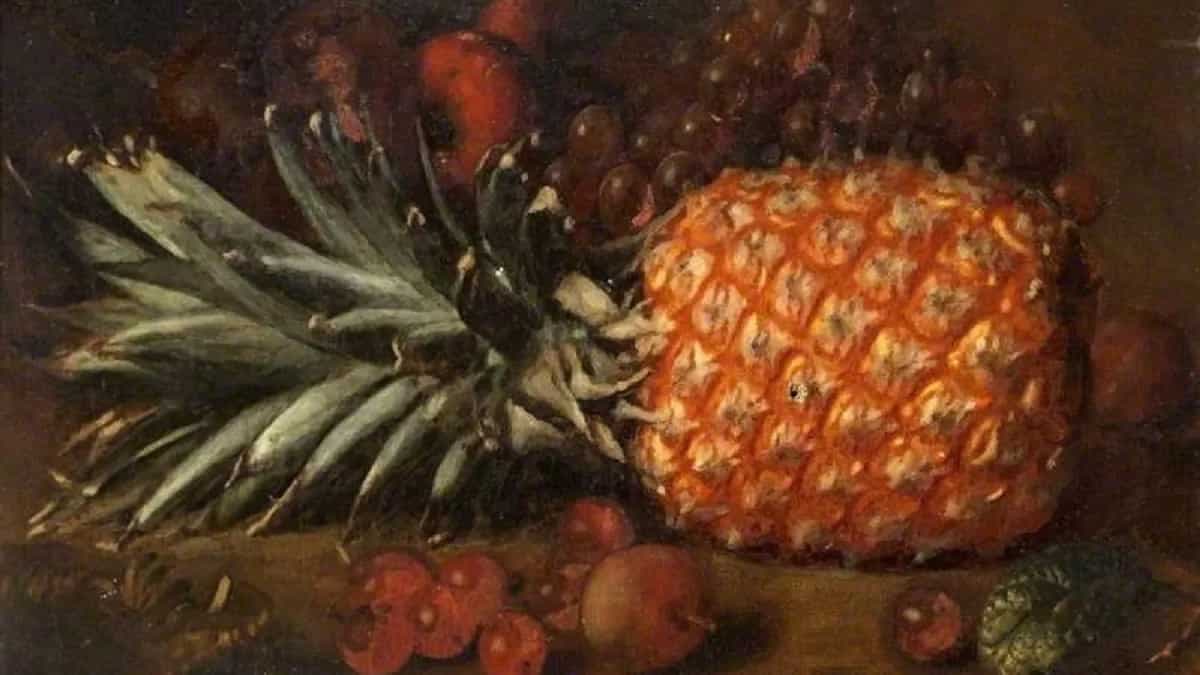This post was originally published as part of our daily newsletter, Just One Thing. Sign up here to receive a free copy in your mailbox through the week!
***
THE story goes that Christopher Columbus was the first European to encounter a pineapple. He’s disembarked on the Caribbean island of Guadaloupe in November of 1943, where his men came upon a village whose inhabitants had fled, and two cooking pots — one with human flesh, and the other piled high with fresh fruit of all kinds, including a hand-sized one with hard spikes all around its brownish-yellow exterior and a fountain of leaves sprouting from its crown — that pointed to a feast they’d perhaps been preparing.
The men broke the fruit, and found that beyond the prickly exterior there lay a golden, juicy, crisp pulp, so sweet — with the merest hint of tart — that its flavour couldn’t be described as anything but sublime. The local name for it was ‘nanas’, which means “excellent fruit”. Columbus decided to take a few of these pine cone-like fruit home, but it would be another couple of centuries before the pineapple — for that is what the fruit was — came to be grown in Europe.
The pineapple is a common enough fruit today — certainly no one devotes odes to it, like the mango, or extols its virtues ad nauseam (a la the apple). The discourse it most prominently features in — its legitimacy as a pizza topping — is not a particularly flattering one. And yet, there was a time when the pineapple was among the most coveted fruits of all… a marker of wealth, privilege, good taste, and hospitality. It was lauded as a prince among fruit, an object of art. King Charles II even had a portrait painted in which he is depicted receiving the gift of a pineapple.
What made the pineapple such a luxury item was its scarcity. Columbus may have encountered it in the Caribbean, but it was indigenous to South America. Very little of the fruit would survive the long ocean voyage to Europe. And in Europe itself, the climate was not ideal to cultivate the fruit on any major scale. Only in the houthouses of aristocratic estates and palaces did a few of these prized fruit grow. What if you were part of a moneyed class but still couldn’t get access to the notoriously difficult to procure pineapple? Why, you rented it, of course!
Charles II is presented a pineapple. Courtesy Royal Collection Trust. © His Majesty King Charles III 2023
***
The 18th century saw hourly pineapple rental as a practice, where a homeowner might hire a fruit for an important occasion, like a formal dinner, and place it as the centrepiece for guests to marvel at. At the conclusion of the event, the pineapple would be returned to its owner, who’d rent it out to the next customer and so on, until it was overripe, at which time it would be sold to an even more wealthy personage who could afford to eat it. Unsupported accounts claim that people also rented pineapples to carry along with them to events — to impress fellow attendees — and on occasion, even on their walks about town.
Elsewhere, the pineapple’s unique appearance had made it a fixture in the art and architecture of the time. Whether or not that story about Columbus and the contents of the cooking pots in Guadaloupe is true, sailors did witness the Caribbean practice of placing a pineapple outside the home to indicate that guests were welcome. They carried the custom back to the West with them. Now, pineapples wrought in iron, and carved in wood, began to appear on gateposts and by doors. The fruit’s distinctive motif was seen in everything from buildings to tapestries and rugs.
However, few (if any) could match the most elaborate monument erected by John Murray, 4th Earl of Dunmore, later the last Colonial governor of Virginia, on his family estate in Scotland. There, an impressive folly/summerhouse on the grounds boasts of a very curious cupola — a massive, life-like pineapple, delicately carved from stone.


